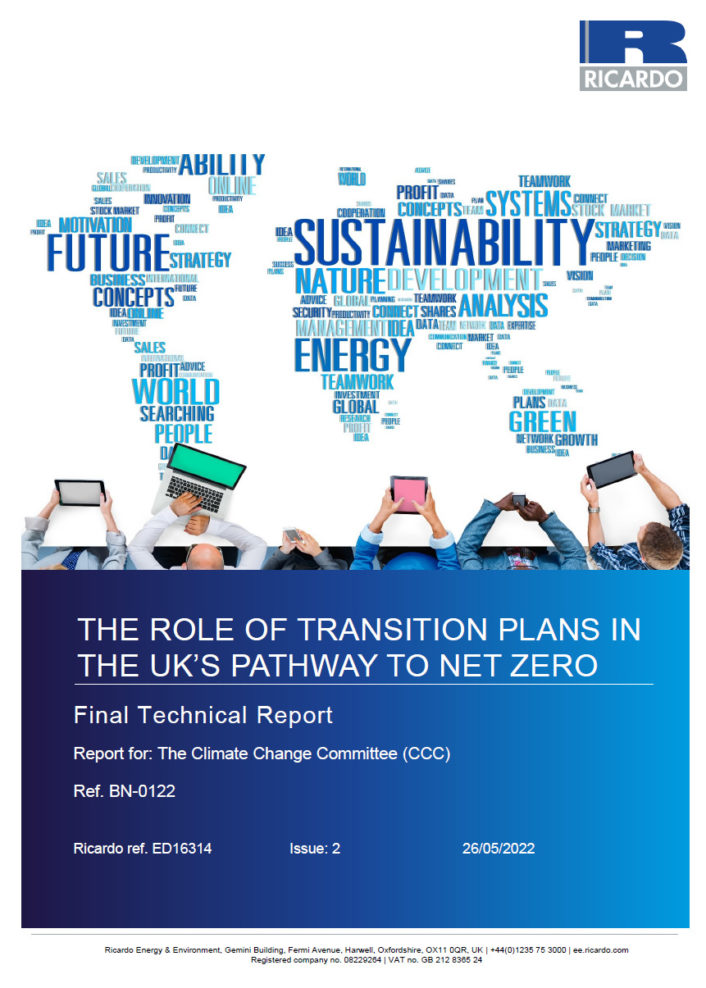1. Outline
The Climate Change Committee (CCC) commissioned Ricardo Energy & Environment to provide an independent and critical assessment of what a UK transition plan should include, what the options for monitoring and governing transition plans are, and what mechanisms can be put in place to ensure the UK transition plan standard actually raises emissions reduction ambition. Ricardo’s assessment, along with other published frameworks and analysis, have informed the CCC’s own position on transition plans, which is set out in our Progress Report.
2. Key messages
Ricardo’s assessment concluded that:
- A number of organisations have published frameworks for transition plans, but these set out different visions of what it should contain and how it will be structured. The transitions plans standard provides an opportunity to:
- Drive changes in corporate behaviour to ensure the UK meets its targets.
- Send a clear signal to investors that the UK is open for low-carbon investment.
- Increase engagement and support for the development of net zero transition plans.
- Incentivise companies and supply chains when they achieve their target reductions.
- There are also risks that they may not provide sufficient insight into the actions needed to reduce emissions, be sufficiently open, transparent and comprehensive, ensure a just transition, encourage the development of new goods and services or consider adaptation and biodiversity.
- Transition plans should be designed so they can be used as a financial instrument for the investment market to raise capital for net zero actions.
- They should include forward-looking performance indicators to monitor corporate alignment with national and sectoral decarbonisation. These should align with the guidelines set out in the LSE Climate Transition Handbook and could include either a minimum emissions reduction and/or minimum carbon price requirements, and indicators of public procurement eligibility, carbon intensity and compliance with carbon budgets.
- They could include various metrics, tailored by sector, to capture the business’ ambition and environmental performance. An environmental label could be included that indicates the level of emissions reduction ambition that a company has relative to its sector benchmark.
- There should be a level of independent assurance of transition plans, to address greenwashing concerns.
- A section could be included to measure progress against plans set with a schedule of authorised indicators for use in business planning and by investment firms for benchmarking.
Topics


